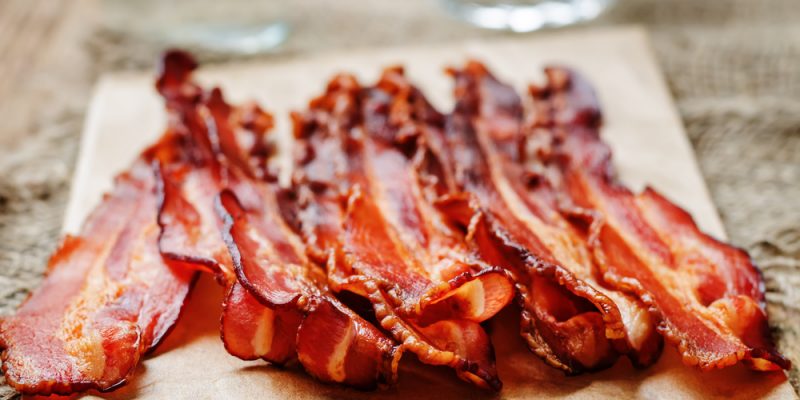Spotlight on Bacon
There’s more to bacon that meets the eye. Is it really bad to indulge in this popular breakfast and snack favourite? In this post, we shine a spotlight on Bacon and how you can have it in a balanced diet.
What is Bacon?
- Just like ham, bacon is a product from pork. It’s generally prepared from the belly of a pig (aka pork belly) but it can also come from loin or shoulder cuts too.
- Bacon goes through a curing process, where the meat is soaked in a solution of salt, nitrates, spices and sugar. In some cases, the bacon is smoked afterwards. Curing is done in order to preserve the meat. The high salt makes protect the meat from bacteria, nitrates also help fight this and gives the bacon its red colour.
- In general, bacon should have thin streaks of meat, evenly distributed and separated by snowy white fat.
Healthy Alternatives?
- If it isn’t made of pork, it isn’t true bacon, and even if you find a substitute such as ‘soy bacon’, ‘veggie bacon’, ‘fake bacon’ etc. you’re also going to be guilty of eating something heavily processed as well.
- The best bacon is unprocessed and preferably cured with natural ingredients, from pasture-raised pigs, void of artificial ingredients and preservative.
- The issue with having too much bacon comes from the curing process – bacon can be very high in sodium. If you enjoy bacon – eat it! Just remember, enjoy bacon in moderation. If you’re worried about sodium content, just keep an eye on how much you eat. If you want a lower fat and saturated fat pork bacon, choose from the centre cut bacon.
Selection & Storing Tips
- When buying in store, pick one that has the least amount of ingredients on the back, and pick a package which contains ingredients you actually recognise. Always check the “used by date” on the package. Don’t fall victim to the “no nitrates and nitrites added”, “uncured”, and “hormone-free” fallacies – there will be nitrates and nitrates in your bacon from either natural or unnatural sources because bacon isn’t bacon unless it’s cured.
- Once open you have 7-10 days to eat the bacon. After eating some of the bacon, wrap the rest of the bacon in plastic, or place the bacon in a plastic bag and remove all the air before returning it to the fridge.
- If you have a lot of bacon close to expiry date, go ahead and freeze it. It should last for 1 to 2 months. Wrap it tightly in heavy aluminum foil or freezer bags. You can also cook your bacon and then refrigerate it within two hours, which will buy you another 3 to 4 days.
- When in doubt, If it looks or smells off, throw it out. No need to make yourself sick from eating expired bacon.
A few ways to enjoy bacon
- Bacon wrapped asparagus
- Bacon and shrimp kebabs
- Potato Salad with Bacon Bits
- Bacon and Eggs Breakfast
- Bacon Sandwich/Burger
